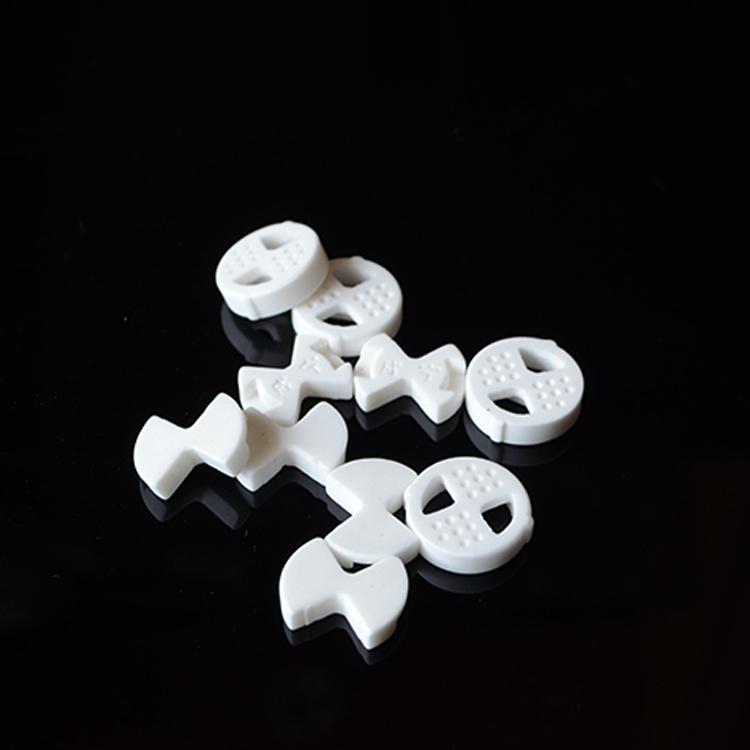
Understanding High Heat Resistance Ceramic Parts in Construction Materials
Time:
2025-05-26 11:40
Source:
High heat resistance ceramic parts play a crucial role in various applications within the construction and decoration materials industry, particularly in brick and stone materials. These specialized ceramic components are designed to withstand extreme temperatures, making them highly valuable for specific environments and uses.
One of the primary benefits of using high heat resistance ceramic materials is their ability to maintain structural integrity under thermal stress. Traditional materials may deform or fail when exposed to high temperatures, but ceramics can endure such conditions without compromising their performance. This characteristic is essential in applications like fireplaces, ovens, and industrial equipment where heat exposure is frequent and intense.
In the context of building materials, high heat resistance ceramics are particularly advantageous for facades, roofing, and flooring. They help to ensure that buildings remain aesthetically pleasing while also providing excellent fire resistance. This enhances not only the safety of the structures but also their longevity, reducing the need for frequent repairs or replacements due to thermal damage.
Moreover, high heat resistance ceramics can also contribute to energy efficiency in buildings. Their insulating properties can help regulate indoor temperatures by reducing heat transfer, leading to lower energy consumption for heating and cooling. This aspect is increasingly important as sustainability becomes a focal point in construction practices.
Another significant advantage of these ceramic parts is their versatility in design. High heat resistance ceramics can be manufactured in various shapes, sizes, and colors, allowing architects and designers to incorporate them seamlessly into their projects. This flexibility does not only enhance the aesthetic appeal of buildings but also allows for innovative architectural solutions that push the boundaries of design while adhering to safety standards.
Furthermore, high heat resistance ceramic parts are often easier to maintain compared to other materials. They are resistant to discoloration, staining, and degradation, which means that structures can remain visually appealing over time with minimal upkeep. This durability is particularly advantageous in high-traffic areas or installations exposed to harsh weather conditions.
In conclusion, high heat resistance ceramic parts are an essential component of modern construction and decoration materials. Their ability to withstand high temperatures, combined with their aesthetic versatility and energy efficiency, make them an ideal choice for various applications within the industry. Understanding the benefits and potential uses of these materials can help professionals make informed choices in their projects, ensuring safety, durability, and sustainability in construction.
One of the primary benefits of using high heat resistance ceramic materials is their ability to maintain structural integrity under thermal stress. Traditional materials may deform or fail when exposed to high temperatures, but ceramics can endure such conditions without compromising their performance. This characteristic is essential in applications like fireplaces, ovens, and industrial equipment where heat exposure is frequent and intense.
In the context of building materials, high heat resistance ceramics are particularly advantageous for facades, roofing, and flooring. They help to ensure that buildings remain aesthetically pleasing while also providing excellent fire resistance. This enhances not only the safety of the structures but also their longevity, reducing the need for frequent repairs or replacements due to thermal damage.
Moreover, high heat resistance ceramics can also contribute to energy efficiency in buildings. Their insulating properties can help regulate indoor temperatures by reducing heat transfer, leading to lower energy consumption for heating and cooling. This aspect is increasingly important as sustainability becomes a focal point in construction practices.
Another significant advantage of these ceramic parts is their versatility in design. High heat resistance ceramics can be manufactured in various shapes, sizes, and colors, allowing architects and designers to incorporate them seamlessly into their projects. This flexibility does not only enhance the aesthetic appeal of buildings but also allows for innovative architectural solutions that push the boundaries of design while adhering to safety standards.
Furthermore, high heat resistance ceramic parts are often easier to maintain compared to other materials. They are resistant to discoloration, staining, and degradation, which means that structures can remain visually appealing over time with minimal upkeep. This durability is particularly advantageous in high-traffic areas or installations exposed to harsh weather conditions.
In conclusion, high heat resistance ceramic parts are an essential component of modern construction and decoration materials. Their ability to withstand high temperatures, combined with their aesthetic versatility and energy efficiency, make them an ideal choice for various applications within the industry. Understanding the benefits and potential uses of these materials can help professionals make informed choices in their projects, ensuring safety, durability, and sustainability in construction.
High heat resistance Ceramic part

